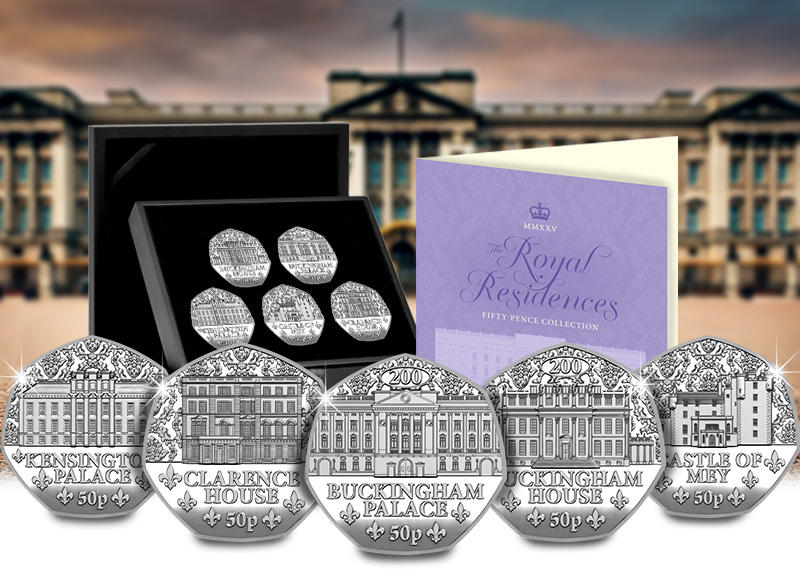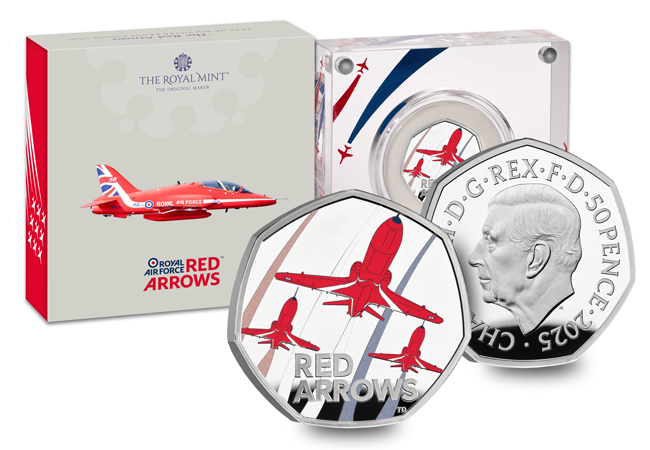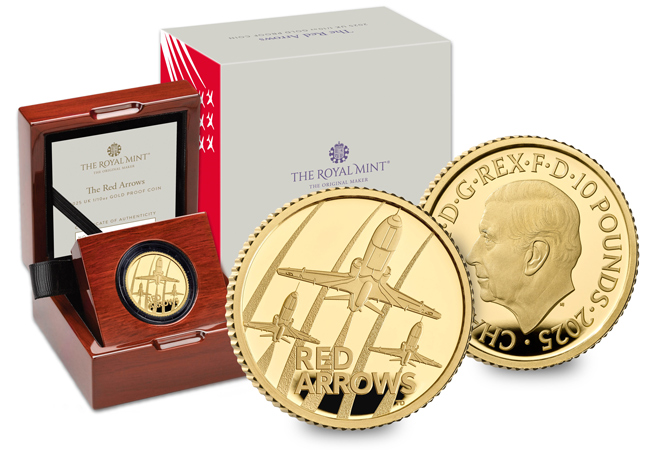Posts Tagged ‘Coins’
Introducing the 2025 Royal Residences 50p Collection
Following in the footsteps of the sell-out Platinum Jubilee and Coronation 50p collections, a brand-new release is set to captivate collectors and Royal enthusiasts alike. The latest instalment in the sought-after Royalty 50p programme shines a spotlight on five historic Royal Residences—places that have witnessed some of the most defining moments in British history.
Honouring 200 Years of Buckingham Palace
This exciting new collection comes at a particularly special time, marking 200 years since the transformation of Buckingham House into the world-famous Buckingham Palace we know today. To commemorate this milestone, the 2025 Royal Residences 50p Collection has been officially authorised for release by King Charles III and Palace Authorities.
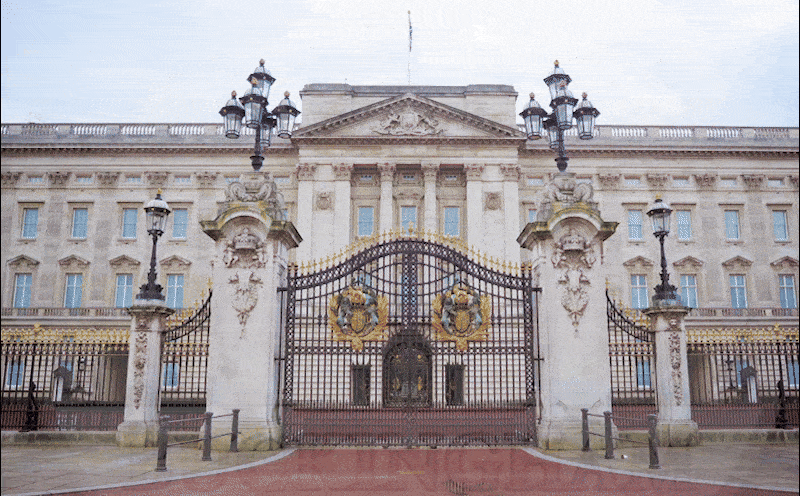
Steeped in tradition and grandeur, the Royal Residences have been the backdrop for everything from royal births and weddings to state occasions and coronations. Each residence carries with it a rich history, offering a glimpse into the personal and public lives of the Royal Family.
The Five Iconic 50p Coins featuring Royal Residences
This highly anticipated collection celebrates five historic Royal Residences, each with a unique connection to the British Monarchy:
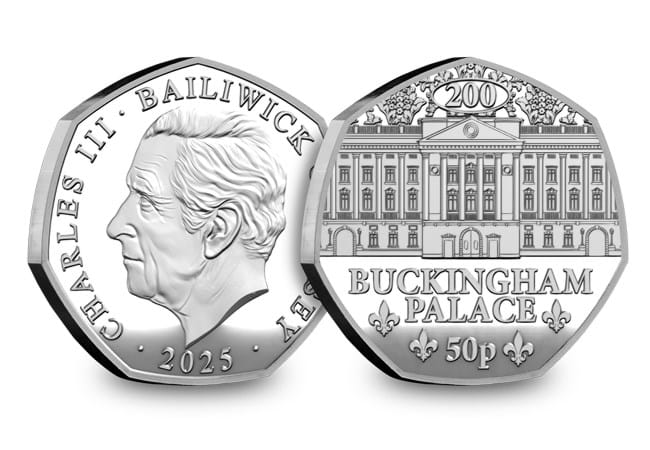
Buckingham Palace
Attracts over 500,000 visitors each year.
The official London residence of King Charles III and the administrative headquarters of the Monarchy.
Buckingham House
This one-time modest house evolved into one of the most iconic palaces in the world.
The original building that lay at the heart of Buckingham Palace before its grand transformation in 1825.
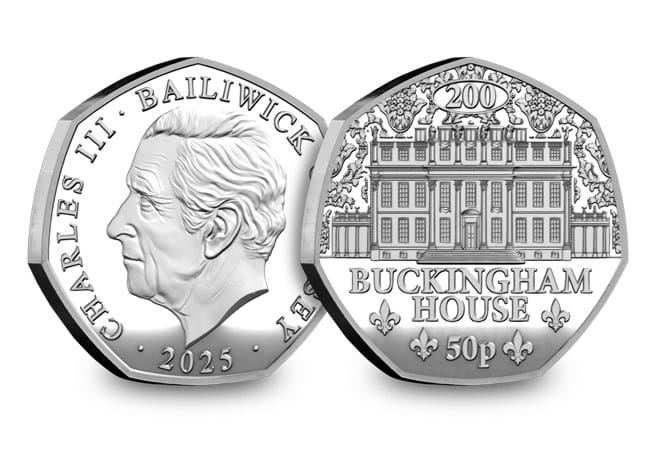
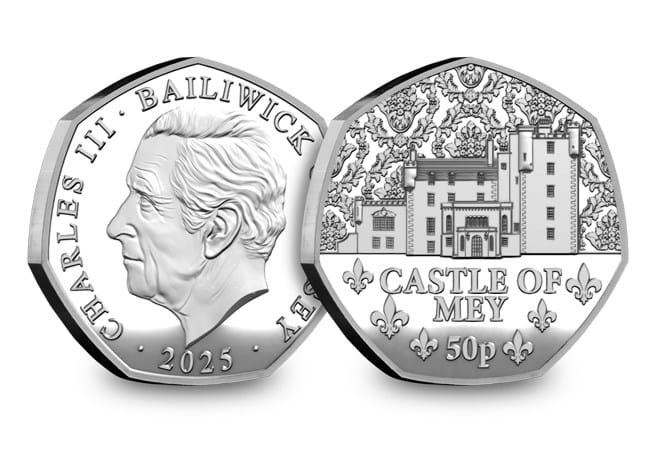
Castle of Mey
Now visited annually by King Charles III and Queen Camilla each July.
Restored by The Queen Mother in the 1950s, this Scottish castle remains a cherished Royal retreat.
Clarence House
Previously home to The Queen Mother for nearly 50 years.
The London residence of King Charles III and Queen Camilla since 2003.
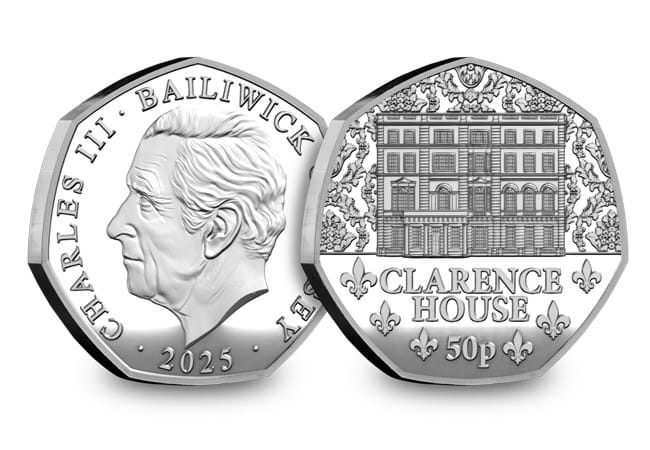
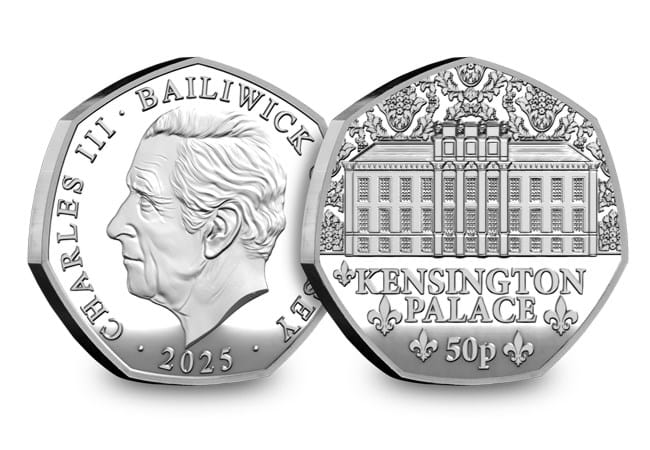
Kensington Palace
Today, it remains the London residence of the Prince and Princess of Wales.
A historic residence that has been home to generations of the Royal Family.
Exclusive One-Year-Only Privy Mark

Collectors will be particularly excited about the exclusive design details incorporated into this collection. The Buckingham Palace and Buckingham House 50p coins will feature a one-year-only “200” Privy Mark, making them truly unique additions to any collection.
Secure Your Royal Residences 50p collection
The 2025 Royal Residences 50p Collection is available in a variety of specifications to suit every collector. Given the popularity of previous Royal 50p collections, demand for these coins is expected to be exceptionally high.
Click below to explore the full range and secure your piece of Royal history today!
Red Arrows 50p Coin Collection: A Tribute to Britain’s Iconic Aerobatic Team
A new UK 50p has just been released celebrating the legacy and precision of the iconic Red Arrows. Originally featured in this year’s annual coin set, the Red Arrows 50p has now been released individually, with some incredibly limited specifications making their debut in today’s launch.
A Legendary Team Honoured on UK Coinage
Since their inception in 1964, the Royal Air Force Aerobatic Team—better known as the Red Arrows—have performed nearly 5,000 dazzling displays across 57 countries. Renowned for their precision flying and breathtaking aerobatic formations, the Reds represent the pinnacle of aviation skill. But behind their airborne brilliance stands a team just as crucial—their dedicated ground crew, known as The Blues, who ensure every performance runs seamlessly.
The Red Arrows Silver Proof 50p
At the heart of this new collection is the Red Arrows Silver Proof 50p, which features an iconic depiction of the Red Arrows’ Hawk T1 aircraft flying overhead in their signature formation, leaving behind their famous red, white, and blue smoke trails. This stunning coin, available in silver proof and piedfort editions, comes alive with exquisite colour printing that enhances the striking design.
For collectors looking for something even more exclusive, the Red Arrows Silver UK Coin Cover is a must-have. Limited to just 150 covers worldwide, this extraordinary piece pairs the stunning silver proof 50p with four Red Arrows first-class stamps, alongside a technical drawing of the legendary Diamond 9 Formation—a true celebration of the team’s history and expertise.
An Exclusive Gold Coin Release
For those who favour ultra-limited editions, here is something truly special—a tenth of an ounce gold coin, available exclusively through The Westminster Collection. With only 500 pieces released worldwide, this coveted release is set to be a standout in any collection. The Red Arrows have a dedicated fan base, and with coin collectors also vying for these rare pieces, demand is expected to be exceptionally high.
Secure Your Piece of Aviation History
With such limited numbers available, these coins are destined to sell quickly. Whether you’re an aviation enthusiast, a long-time Red Arrows fan, or a passionate coin collector, this collection is a remarkable tribute to one of Britain’s most celebrated aerobatic teams.
The Rare Brexit 50p: Have you got one?
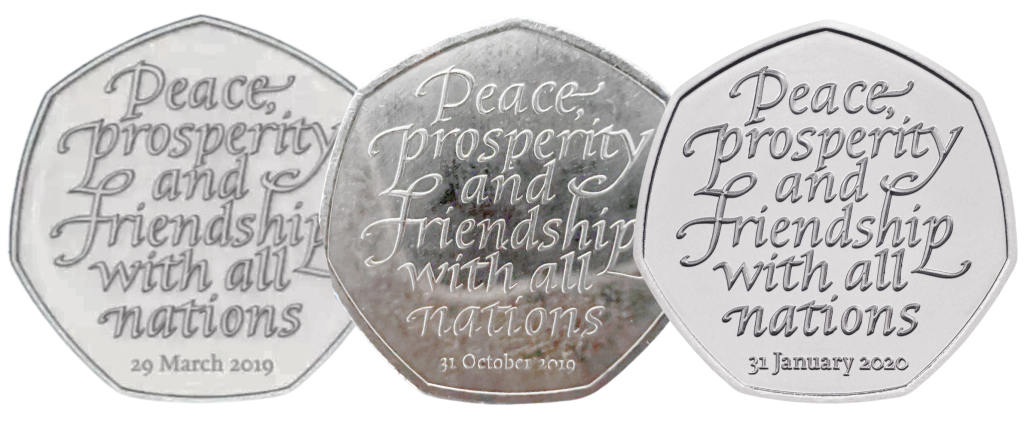
If you’re reading this, you’re probably wondering, “Do I own this incredibly rare 50p?”. Well here’s some background information: After the historic 2016 referendum, the UK officially left the European Union on 31st January 2020. To mark this pivotal moment in modern British history, the Brexit 50p—also known as the UK Withdrawal from the EU 50p—was issued. However, due to multiple delays and deferrals, three distinct versions exist, making it one of the most fascinating modern coin releases.
The Three Brexit 50p Coins
The 29th March 2019 Brexit 50p
In 2018, it was announced that a commemorative 50p would be struck to mark the UK’s departure from the EU, originally scheduled for 29th March 2019. The coin’s design was revealed by the Treasury on social media, featuring the inscription “Peace, prosperity and friendship with all nations” alongside the planned withdrawal date.
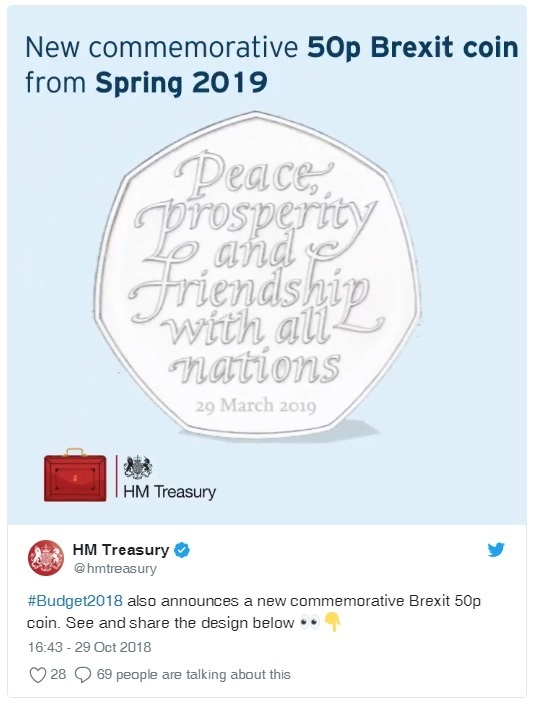
However, after Brexit was postponed, only 1,000 coins with this date were minted. Of these, 990 were melted down, leaving just 10 surviving examples securely held by The Royal Mint. None of these coins were released into circulation, making them impossible to find in change.
Rare 50p – Worth Over £40,000!
As the UK’s departure was rescheduled for 31st October 2019, The Royal Mint struck over one million new Brexit 50ps featuring the revised date. Yet, history repeated itself, and on 28th October 2019, Brexit was delayed once more. As a result, the vast majority of these coins were melted down before they could enter circulation.
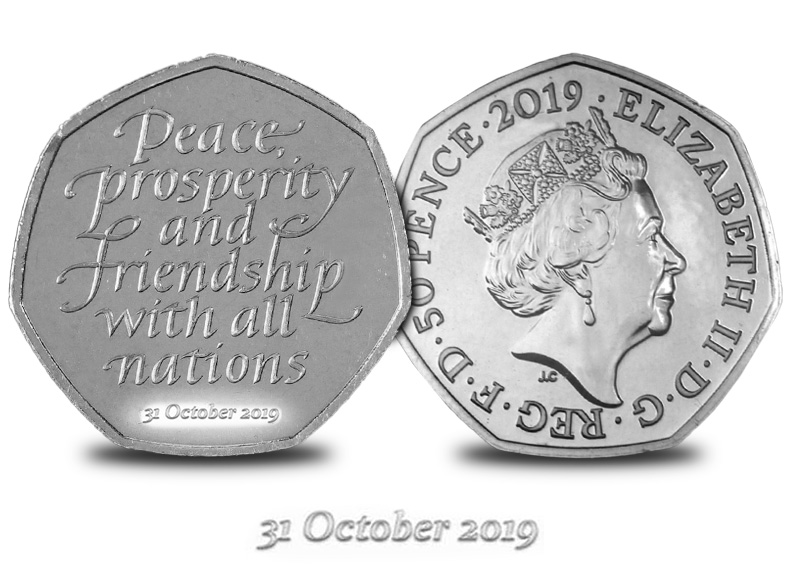
However, against all odds, two examples have surfaced in circulation, making them some of the rarest and most valuable 50ps ever discovered.
Given their extreme rarity, these coins are estimated to be worth over £40,000 each, according to numismatic specialists at Spink and Son auction house! Their discovery has been described as a “Golden Ticket moment”, emphasising their significance in the world of coin collecting. With only two known examples in existence, they could potentially break records for a UK circulating coin should they ever go to auction.
The 31st January 2020 Brexit 50p
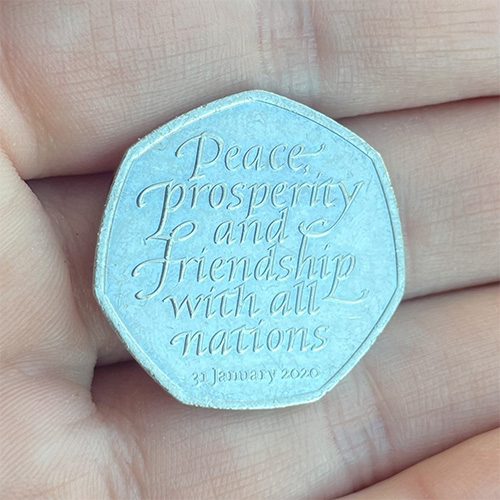
With Brexit finally taking place on 31st January 2020, The Royal Mint once again revised the 50p design to reflect the correct date. This version entered circulation as intended, with 10,001,000 coins released.
How Rare Is the Brexit 50p?
While the 31st January 2020 Brexit 50p is an important historical coin, its mintage of over 10 million means it is not particularly rare. In contrast, the 31st October 2019 Brexit 50ps are some of the rarest modern UK coins, with just two known examples in existence—and an estimated value of over £40,000 each, according to numismatic specialists at Spink and Son auction house!

A Rare and Controversial 50p Coin
The Brexit 50p sparked debate beyond its rarity. Some critics, including author Sir Philip Pullman, objected to the lack of an Oxford comma in the coin’s inscription, arguing that “Peace, prosperity and friendship with all nations” should have included a comma after “prosperity.”
Despite the controversy, the Brexit 50p remains a fascinating piece of numismatic history, marking a significant political moment and offering collectors a rare opportunity to own a coin with an unusual backstory.
Could There Be More £40,000 Brexit 50ps Out There?
With only two known examples of the ultra-rare 31st October 2019 Brexit 50p discovered so far, it raises the thrilling possibility that more could be waiting to be found. Collectors are being urged to check their change—you might just strike gold!
>>> You can buy the 2020 UK Brexit CERTIFIED BU 50p by clicking here <<<

